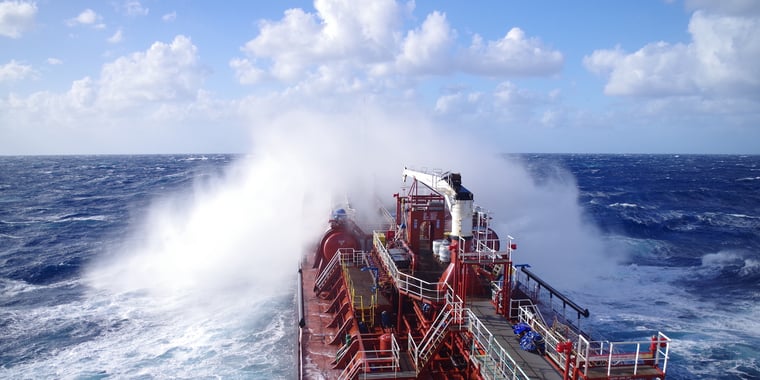As you travel along any coastline, the water level may strongly vary. This variation in water level results in a greater difference in wave heights than you might expect. In this article, we will explain four influences on how the depth influences wave height.
Water motion in a wave
To thoroughly understand what happens in the water when a wave passes, we not only have to consider the water at the surface, but also the sub-surface. A ‘water particle’ or droplet in the sub-surface only slightly moves along with the wave, it remains more or less in place as a wave passes. The droplet actually makes a small circular motion as the wave passes. It rises with the arrival of the wave, and goes down after the wave has passed. The deeper we go down in the water, the smaller this motion becomes.
Effect of depth on waves
A wave is affected by the seabed when the movement of these water particles is limited by the seabed. If there is friction of the wave motion at the bottom of the ocean, the part of the wave near the surface travels faster than the wave below the surface. If the wave motion is limited long enough, eventually the top of the wave will topple over, this is called wave breaking.
Tidal influences of sun and moon
The depth of the water can be largely influenced by tidal effects. The gravity of both sun the and the moon affect movement of water. When the sun and moon are nearest, we experience a spring tide (or: king tide), where the sun and moon are both in line with each other. As a result, a bulge of water, attracted both by the sun and the moon causes water to rise significantly. During neap tide, the sun and moon are not aligned and the bulges of water cancel each other out. Depending on the time and location, this tidal effect may result in an increase of water depth over 16 meters (in the Bay of Fundy, Canada). Similarly, in Europe, the water level may vary significantly, (in the Bristol Channel, United Kingdom) it can cause up to a 15 meter difference. As we know now, the deeper the water, the higher the waves may become. So, with spring tide, we can expect way higher waves than during neap tide.
Water offset by wind
The offset of water is not only affected by sun and moon, the wind also carries along bodies of water. This is most notably seen in the Antarctic Ocean (South Pole). Here, storms can cause a significant offset since the ocean is not limited by a land mass. This phenomenon is not limited to large bodies of water; oin enclosed Seas like the Black Sea or the Caspian Sea, the water offset by wind can cause a significant change in water level and therefore can significantly affect the expected wave height.
Wave course
At Infoplaza, we strongly believe that incorporation of the water level is important to get a reliable weather forecast. Especially in coastal areas, tidal dominated areas or in shallow inner seas the water level effect has to be incorporated. We made an online wave course. In six video’s we explain the principals of waves and wave forecasting.



